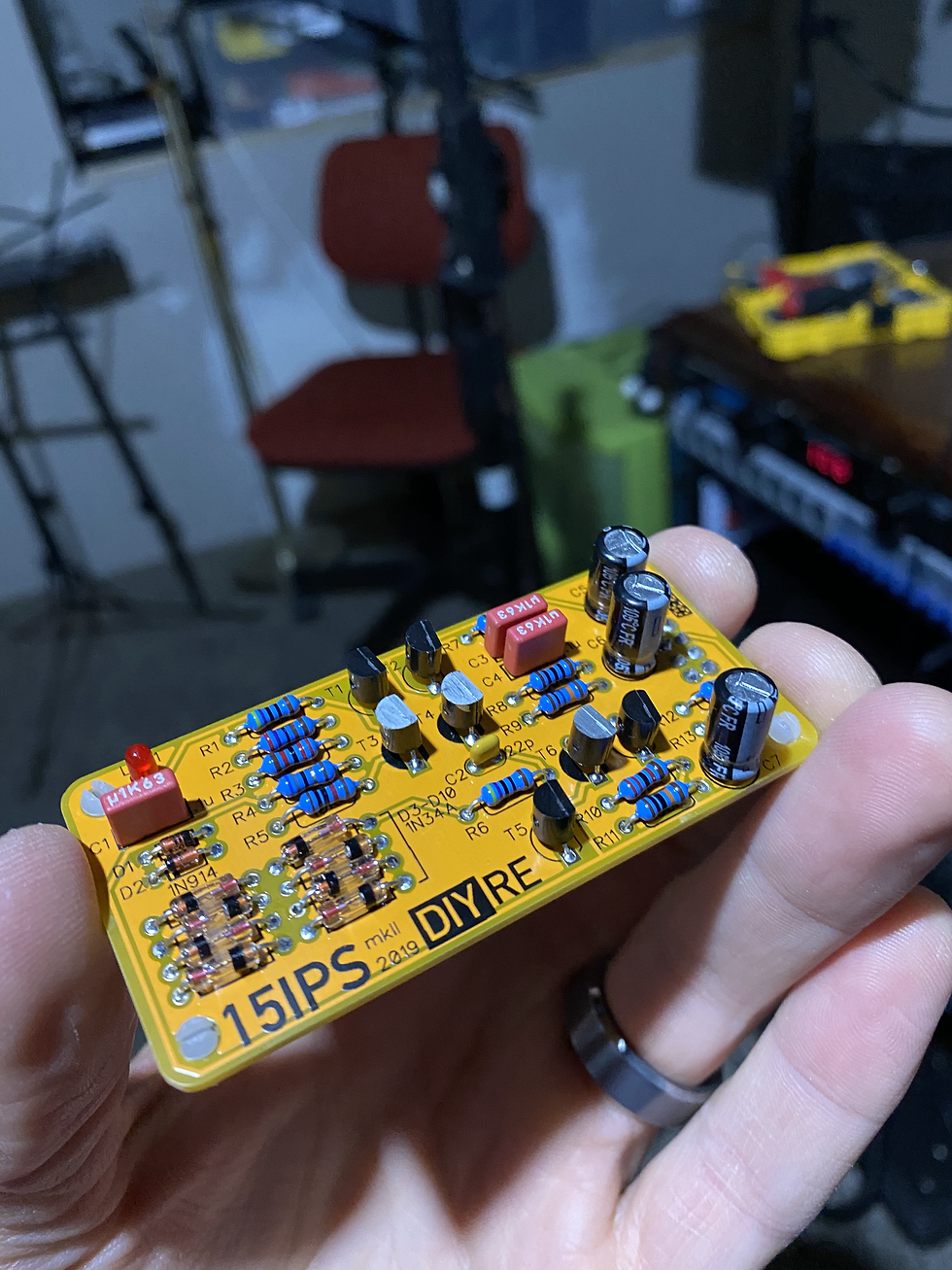DIY 500 Gear
- Kyle Pape

- Mar 8, 2021
- 4 min read
A few years ago as I was wandering down a rabbit hole of of recording gear (as one does), I started researching into 500 series gear. I was instantly drawn to the compact, affordable gear to help me get that analog sound my music was lacking. A few years later, I was messaging my friend Nico and he mentioned there are a few DIY options for building your own DIY 500 series gear. I was instantly hooked to the idea. As a guy who likes to try to fix his own car first and take care of my own lawn, I knew I wanted to explore the DIY route before buying pre-assembled gear.
On the Plus Side
Cost
Size
Customizable
Builder's Pride
My stomach always drops when looking at what it costs to buy analog gear. There’s nothing like getting lost on Sweetwater.com and checking your bank account to see if you could swing an API preamp. I picked up my CP5 Colour Mic Preamp for $150. That’s a price that makes the decision a lot easier. My CAPI LC-40 cost just under $380 (with an upgraded opamp. It’s $360 without). In a perfect world where money isn’t an issue I’d go for bigger name gear, but like most musicians I know, money will always be a factor.

Surprisingly small. Not something I normally like to hear but with 500 series gear, that’s a good thing. The units themselves are much smaller than I anticipated in the early stages of my research. It’s amazing how much power is packed into these units. I have a Midas L-10 500 series rack to plug my units into. That means I can pack a few preamps, eqs, compressors, bus compressors, and effects into a portable unit. I’m all about that. Now I just need the money to fill up the rest of the slots.

500 series gear can be extremely flexible. In both the order of the units and the units themselves, you can really make this stuff sound how you want it to. EQ before compressor? Compressor after EQ? It takes a minute to rearrange the units themselves. Furthermore, a lot of the DIY units you buy can be customized to fit the sound you’re looking for. The best example of this is the Colour Format by www.diyrecordingequipment.com.

I haven’t pulled the trigger yet, but I’ll be looking to get a Colour Palette from them soon. With the Colour Palette you can create channels of saturation, filters, overdrive, and even mimic console color. I have the 15IPS Tape Saturation Colour and love some of tone and warmth it is adding to my recordings. You can also typically upgrade certain parts of your 500 series unit to fit your needs.

Lastly, it’s just fun. During the process of making these units I’ve been learning a ton about electronics. I’m no expert, but am starting to develop a deeper understanding of the gear I have, which any good recording engineer will tell you is an essential part of the work. My soldering skills are still basic but improving with every resistor, transistor, and diode. The assembly part of DIY gear is turning out to be one of my favorite parts. In the end, the music I write and produce will be made on gear I assembled myself, 100% DIY from start to finish. That’s something to be proud of.
On the Down Side
Less Options
Messing Up Stinks
The Learning Curve

One of the biggest downsides of DIY is that there are limited dealers who sell DIY. DIYRE and CAPI are the two I’ve researched the most in the US. I know Sound Skulptor has some highly reviewed gear based in Europe (surprisingly shipping is only 21 euros). Other than that, I haven’t heard of any recommendations from gearheads of other companies to buy from. These three companies are great but it does limit your choices in the grand scheme of 500 series gear.
I’m always a little scared when soldering my gear. One mistake and the whole thing might not work. I experienced this with my first build. I occasionally experience a signal drop while recording with my CP5 Preamp. After taking the unit out and looking over my work closer, some of my joints were sloppy. After a quick clean up, the unit started working again as it should. I’m sure as my experience level goes up my mistakes will go down, but right now I’m kind of floundering about while I work, praying the signal will come out clean when all is said and done.

As someone who has never worked with electronics, trying to figure out what each part of the unit does is mindblowing. I’ve watched YouTube videos and read beginner guides, but I still struggle to explain what resistors, transistors, capacitors, and diodes do. To me, it’s not essential because my end goal is to get great sounding gear, not become a professional in the world of electronics. I still long for more understanding and hopefully I’ll be able to use some of my knowledge with modding pedals and possibly building my own designs from scratch. That’s a long way off, but could be in my future.
If you have any curiosity in building your own gear I highly recommend picking up a soldering iron and getting started. It’s a highly rewarding hobby and in the end it does what I’ve always wanted to do: make great music.
Have any questions or comments? Leave them below and I’ll get back to you!

Comments